Establishing Liposome-Immobilized Dexamethasone-Releasing PDMS Membrane for the Cultivation of Retinal Pigment Epithelial Cells and Suppression of Neovascularization
Abstract
1. Introduction
2. Results
2.1. Production and Characterization of Laminin-Modified PDMS Film
2.2. Human Induced Pluripotent Stem Cell (hiPSC) Culture on Laminin-Modified PDMS
2.3. hiPSC-Derived Retinal Pigment Epithelial (hiPSC-RPE) Cell Growth on Laminin-Modified PDMS
2.4. RPE Cells Cultured on Laminin-Modified PDMS Film Demonstrate Normal RPE Biological Functions
2.5. PDMS Film Biotin Surface Modification and Coating with Dexamethasone-Loaded Liposomes
2.6. The Inhibitory Effect of Dexamethasone Released from Liposomes on Secretion of VEGF by RPE
3. Discussion
4. Materials and Methods
4.1. PDMS Film Curing
4.2. Film Thickness Measurement
4.3. Surface Hydrophobicity Analysis
4.4. Surface Modification for Laminin Crosslinking
4.5. Preparation of Dexamethasone-Loaded Liposomes
4.6. hiPSCs Generation and Cultivation
4.7. Differentiation of hiPSCs to RPE Cells
4.8. tBH-Treated RPE-Conditioned Medium HUVEC Assay
4.9. Alkaline Phosphatase Assay
4.10. Reverse Transcription-Polymerase Chain Reaction (RT-PCR)
4.11. Quantitative RT-PCR (qRT-PCR)
4.12. Immunofluorescence Staining
4.13. MTT Assay
4.14. Enzyme-Linked Immunosorbent Assay (ELISA)
4.15. Phagocytosis Assay
4.16. Wound Healing Assay
4.17. Statistical Analysis
5. Conclusions
Author Contributions
Funding
Acknowledgments
Conflicts of Interest
Abbreviations
| AMD | age-related macular degeneration |
| RPE-BM | retinal pigmented epithelium and Bruch’s membrane |
| PDMS | polydimethylsiloxane |
| hiPSC | human induced pluripotent stem cells |
| VEGF | vascular endothelial growth factor |
| CNV | choroid neovascularization |
| PEDF | pigment epithelium-derived factor |
| NNAMD | non-neovascular age-related macular degeneration |
| HUVEC | human umbilical vein endothelial cells |
| APTES | 3-aminopropyltriethoxysilane |
| XPS | X-ray photoelectron spectroscopy |
| EDC | 1-Ethyl-3-(3-dimethylaminopropyl)-carbodiimide |
| NHS | N-hydroxysuccinimide |
| ARPE-19 | adult retinal pigment epithelial cell line-19 |
| BEST-1 | Bestrophin-1 |
| ZO-1 | Zonula occludens |
| MITF | Microphthalmia-associated transcription factor |
| RLBP1 | Retinaldehyde binding protein 1 |
| PAX6 | Paired box 6 |
| ELISA | enzyme-linked immunosorbent assay |
| PEG | polyethylene glycol |
| tBH | tert-butyl hydroperoxide |
| AP | alkaline phosphatase |
| DEX | dexamethasone |
| MEF | mouse embryonic fibroblasts |
| KSR | knockout serum replacement |
| FITC | Fluorescein isothiocyanate |
| PE | phycoerythrin |
| DAPI | 4′,6-diamidino-2-phenylindole |
| MTT | 3-(4,5-Dimethylthiazol-2-yl)-2,5-diphenyltetrazolium bromide |
References
- Ferris, F.L., 3rd; Wilkinson, C.P.; Bird, A.; Chakravarthy, U.; Chew, E.; Csaky, K.; Sadda, S.R.; Beckman Initiative for Macular Research Classification Committee. Clinical classification of age-related macular degeneration. Ophthalmology 2013, 120, 844–851. [Google Scholar] [CrossRef] [PubMed]
- Age-Related Eye Disease Study Research Group. A randomized, placebo-controlled, clinical trial of high-dose supplementation with vitamins c and e, beta carotene, and zinc for age-related macular degeneration and vision loss: Areds report no. 8. Arch. Ophthalmol. 2001, 119, 1417–1436. [Google Scholar]
- Bird, A.C. Therapeutic targets in age-related macular disease. J. Clin. Investig. 2010, 120, 3033–3041. [Google Scholar] [CrossRef] [PubMed]
- Ferrara, N.; Gerber, H.P.; LeCouter, J. The biology of vegf and its receptors. Nat. Med. 2003, 9, 669–676. [Google Scholar] [CrossRef] [PubMed]
- Kliffen, M.; Sharma, H.S.; Mooy, C.M.; Kerkvliet, S.; de Jong, P.T. Increased expression of angiogenic growth factors in age-related maculopathy. Br. J. Ophthalmol. 1997, 81, 154–162. [Google Scholar] [CrossRef] [PubMed]
- Rosenfeld, P.J.; Brown, D.M.; Heier, J.S.; Boyer, D.S.; Kaiser, P.K.; Chung, C.Y.; Kim, R.Y.; Group, M.S. Ranibizumab for neovascular age-related macular degeneration. N. Engl. J. Med. 2006, 355, 1419–1431. [Google Scholar] [CrossRef] [PubMed]
- Couch, S.M.; Bakri, S.J. Review of combination therapies for neovascular age-related macular degeneration. Semin. Ophthalmol. 2011, 26, 114–120. [Google Scholar] [CrossRef]
- Lally, D.R.; Gerstenblith, A.T.; Regillo, C.D. Preferred therapies for neovascular age-related macular degeneration. Curr. Opin. Ophthalmol. 2012, 23, 182–188. [Google Scholar] [CrossRef]
- Jo, N.; Mailhos, C.; Ju, M.; Cheung, E.; Bradley, J.; Nishijima, K.; Robinson, G.S.; Adamis, A.P.; Shima, D.T. Inhibition of platelet-derived growth factor b signaling enhances the efficacy of anti-vascular endothelial growth factor therapy in multiple models of ocular neovascularization. Am. J. Pathol. 2006, 168, 2036–2053. [Google Scholar] [CrossRef]
- Schwartz, S.D.; Regillo, C.D.; Lam, B.L.; Eliott, D.; Rosenfeld, P.J.; Gregori, N.Z.; Hubschman, J.P.; Davis, J.L.; Heilwell, G.; Spirn, M.; et al. Human embryonic stem cell-derived retinal pigment epithelium in patients with age-related macular degeneration and stargardt’s macular dystrophy: Follow-up of two open-label phase 1/2 studies. Lancet 2015, 385, 509–516. [Google Scholar] [CrossRef]
- Mandai, M.; Watanabe, A.; Kurimoto, Y.; Hirami, Y.; Morinaga, C.; Daimon, T.; Fujihara, M.; Akimaru, H.; Sakai, N.; Shibata, Y.; et al. Autologous induced stem-cell-derived retinal cells for macular degeneration. N. Engl. J. Med. 2017, 376, 1038–1046. [Google Scholar] [CrossRef] [PubMed]
- Diniz, B.; Thomas, P.; Thomas, B.; Ribeiro, R.; Hu, Y.; Brant, R.; Ahuja, A.; Zhu, D.; Liu, L.; Koss, M.; et al. Subretinal implantation of retinal pigment epithelial cells derived from human embryonic stem cells: Improved survival when implanted as a monolayer. Investig. Ophthalmol. Vis. Sci. 2013, 54, 5087–5096. [Google Scholar] [CrossRef] [PubMed]
- Da Cruz, L.; Fynes, K.; Georgiadis, O.; Kerby, J.; Luo, Y.H.; Ahmado, A.; Vernon, A.; Daniels, J.T.; Nommiste, B.; Hasan, S.M.; et al. Phase 1 clinical study of an embryonic stem cell-derived retinal pigment epithelium patch in age-related macular degeneration. Nat. Biotechnol. 2018, 36, 328–337. [Google Scholar] [CrossRef] [PubMed]
- Kashani, A.H.; Lebkowski, J.S.; Rahhal, F.M.; Avery, R.L.; Salehi-Had, H.; Dang, W.; Lin, C.M.; Mitra, D.; Zhu, D.; Thomas, B.B.; et al. A bioengineered retinal pigment epithelial monolayer for advanced, dry age-related macular degeneration. Sci. Transl. Med. 2018, 10, eaao4097. [Google Scholar] [CrossRef] [PubMed]
- Peng, C.H.; Chuang, J.H.; Wang, M.L.; Jhan, Y.Y.; Chien, K.H.; Chung, Y.C.; Hung, K.H.; Chang, C.C.; Lee, C.K.; Tseng, W.L.; et al. Laminin modification subretinal bio-scaffold remodels retinal pigment epithelium-driven microenvironment in vitro and in vivo. Oncotarget 2016, 7, 64631–64648. [Google Scholar] [CrossRef] [PubMed]
- Todorich, B.; Thanos, A.; Yonekawa, Y.; Mane, G.; Hasbrook, M.; Thomas, B.J.; Woodward, M.A.; Williams, G.A.; Capone, A., Jr.; Wolfe, J.D.; et al. Simultaneous dexamethasone intravitreal implant and anti-vegf therapy for neovascular age-related macular degeneration resistant to anti-vegf monotherapy. J. Vitreoretin. Dis. 2017, 1, 65–74. [Google Scholar] [CrossRef] [PubMed]
- Tsotas, V.A.; Mourtas, S.; Antimisiaris, S.G. Dexamethasone incorporating liposomes: Effect of lipid composition on drug trapping efficiency and vesicle stability. Drug Deliv. 2007, 14, 441–445. [Google Scholar] [CrossRef] [PubMed]
- Kroon, J.; Buijs, J.T.; van der Horst, G.; Cheung, H.; van der Mark, M.; van Bloois, L.; Rizzo, L.Y.; Lammers, T.; Pelger, R.C.; Storm, G.; et al. Liposomal delivery of dexamethasone attenuates prostate cancer bone metastatic tumor growth in vivo. Prostate 2015, 75, 815–824. [Google Scholar] [CrossRef] [PubMed]
- Bailey, T.A.; Kanuga, N.; Romero, I.A.; Greenwood, J.; Luthert, P.J.; Cheetham, M.E. Oxidative stress affects the junctional integrity of retinal pigment epithelial cells. Investig. Ophthalmol. Vis. Sci. 2004, 45, 675–684. [Google Scholar] [CrossRef]
- Klettner, A.; Roider, J. Constitutive and oxidative-stress-induced expression of vegf in the rpe are differently regulated by different mitogen-activated protein kinases. Graefes. Arch. Clin. Exp. Ophthalmol. 2009, 247, 1487–1492. [Google Scholar] [CrossRef] [PubMed]
- White, C.E.; Olabisi, R.M. Scaffolds for retinal pigment epithelial cell transplantation in age-related macular degeneration. J. Tissue Eng. 2017, 8. [Google Scholar] [CrossRef] [PubMed]
- Lu, B.; Tai, Y.C.; Humayun, M.S. Microdevice-based cell therapy for age-related macular degeneration. Dev. Ophthalmol. 2014, 53, 155–166. [Google Scholar] [PubMed]
- Subrizi, A.; Hiidenmaa, H.; Ilmarinen, T.; Nymark, S.; Dubruel, P.; Uusitalo, H.; Yliperttula, M.; Urtti, A.; Skottman, H. Generation of hesc-derived retinal pigment epithelium on biopolymer coated polyimide membranes. Biomaterials 2012, 33, 8047–8054. [Google Scholar] [CrossRef] [PubMed]
- Narayanan, R.; Kuppermann, B.D. Corticosteroids and anti-complement therapy in retinal diseases. Handb. Exp. Pharmacol. 2017, 242, 309–320. [Google Scholar] [PubMed]
- Stewart, E.A.; Saker, S.; Amoaku, W.M. Dexamethasone reverses the effects of high glucose on human retinal endothelial cell permeability and proliferation in vitro. Exp. Eye Res. 2016, 151, 75–81. [Google Scholar] [CrossRef] [PubMed]
- Tyson, S.L.; Bafna, S.; Gira, J.P.; Goldberg, D.F.; Jones, J.J.; Jones, M.P.; Kim, J.K.; Martel, J.M.; Nordlund, M.L.; Piovanetti-Perez, I.K.; et al. Multicenter randomized phase 3 study of a sustained-release intracanalicular dexamethasone insert for treatment of ocular inflammation and pain after cataract surgery. J. Cataract Refract. Surg. 2018. [Google Scholar] [CrossRef] [PubMed]
- Vakalis, N.; Echiadis, G.; Pervena, A.; Deligiannis, I.; Kavalarakis, E.; Giannikakis, S.; Papaefthymiou, I. Intravitreal combination of dexamethasone sodium phosphate and bevacizumab in the treatment of exudative amd. Sci. Rep. 2015, 5, 8627. [Google Scholar] [CrossRef]
- Giancipoli, E.; Pinna, A.; Boscia, F.; Zasa, G.; Sotgiu, G.; Dore, S.; D’Amico Ricci, G. Intravitreal dexamethasone in patients with wet age-related macular degeneration resistant to anti-vegf: A prospective pilot study. J. Ophthalmol. 2018, 2018, 5612342. [Google Scholar] [CrossRef]
- Chien, Y.; Liao, Y.W.; Liu, D.M.; Lin, H.L.; Chen, S.J.; Chen, H.L.; Peng, C.H.; Liang, C.M.; Mou, C.Y.; Chiou, S.H. Corneal repair by human corneal keratocyte-reprogrammed ipscs and amphiphatic carboxymethyl-hexanoyl chitosan hydrogel. Biomaterials 2012, 33, 8003–8016. [Google Scholar] [CrossRef]
- Chuang, J.H.; Yarmishyn, A.A.; Hwang, D.K.; Hsu, C.C.; Wang, M.L.; Yang, Y.P.; Chien, K.H.; Chiou, S.H.; Peng, C.H.; Chen, S.J. Expression profiling of cell-intrinsic regulators in the process of differentiation of human ipscs into retinal lineages. Stem Cell Res. Ther. 2018, 9, 140. [Google Scholar] [CrossRef]
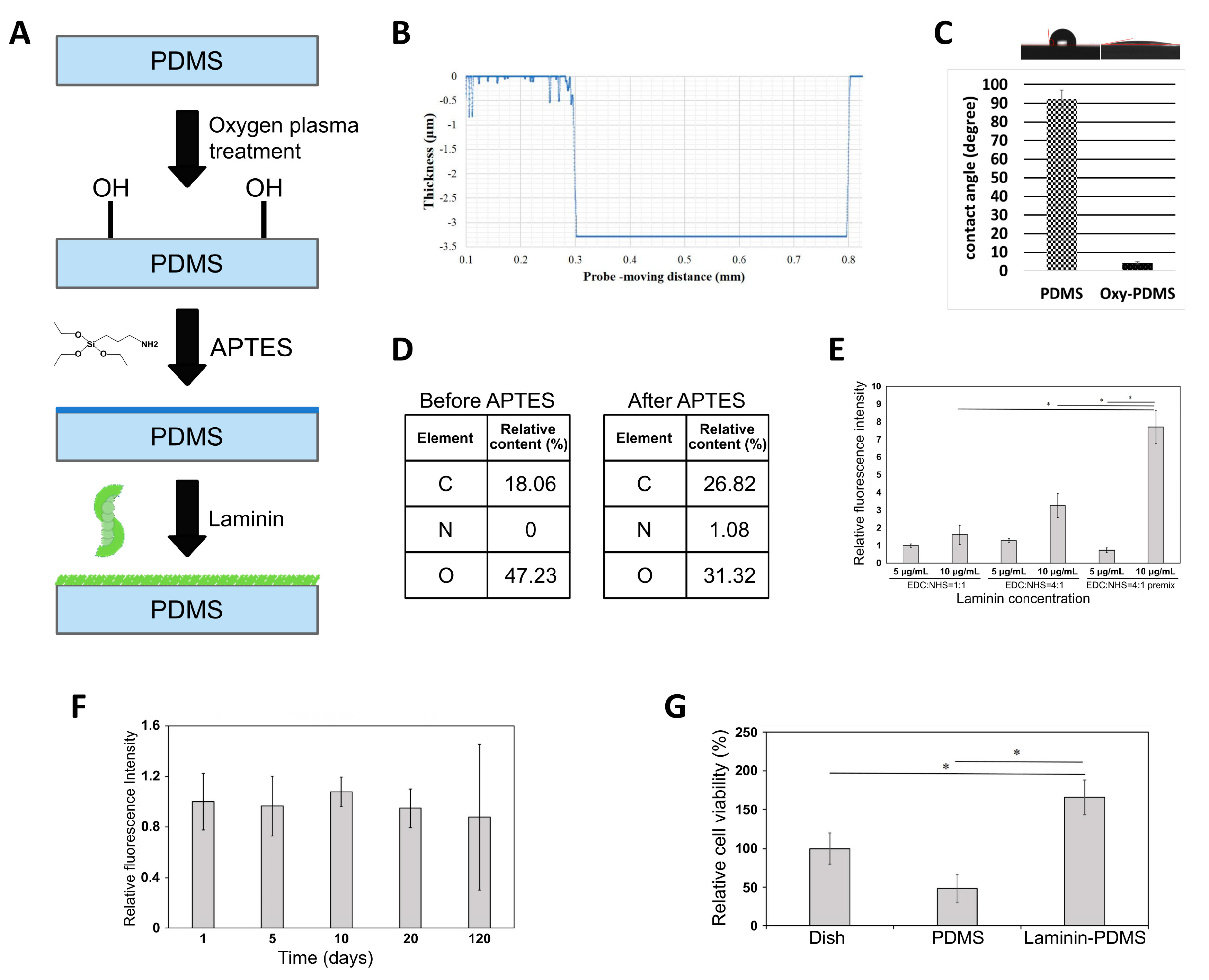
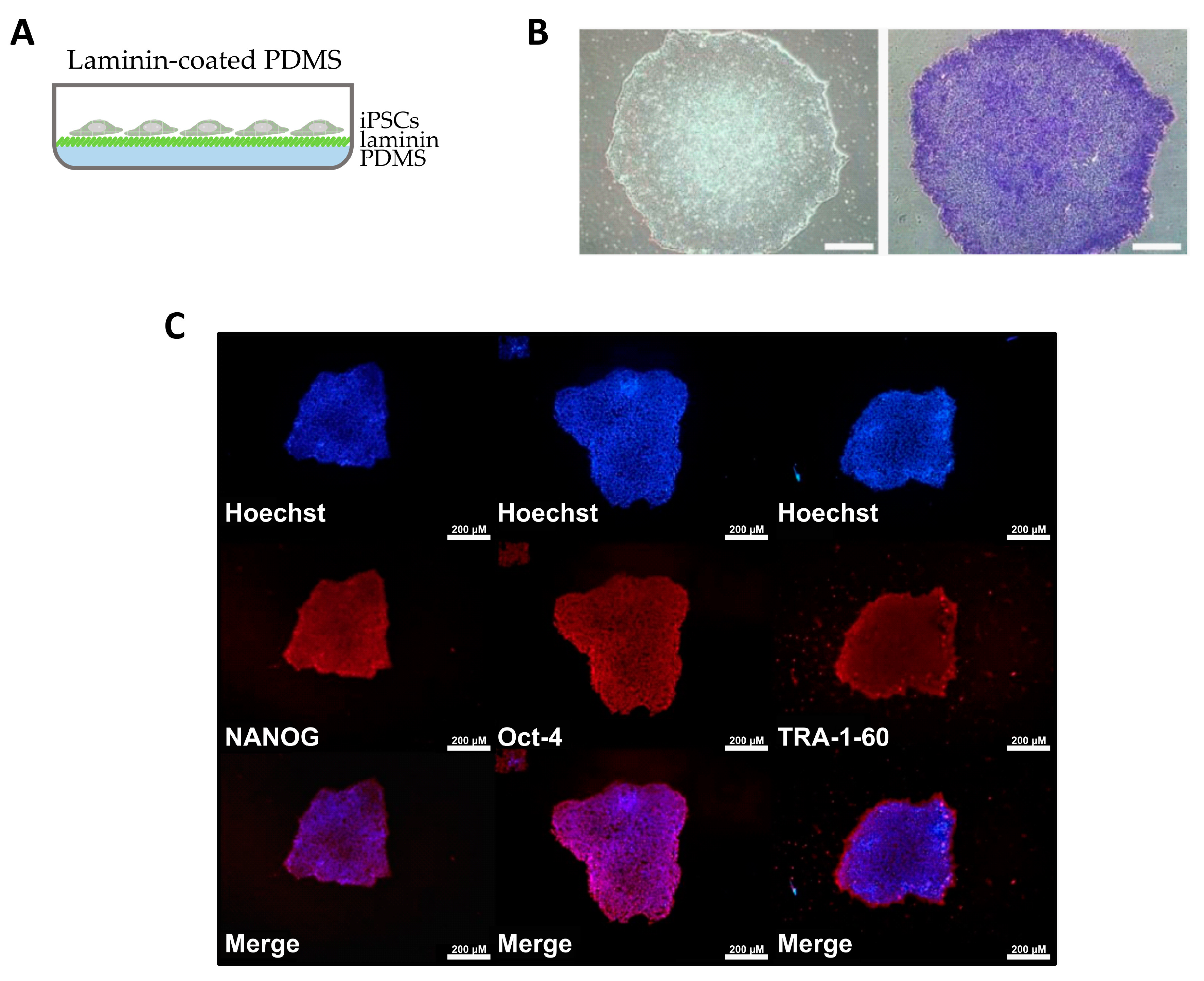
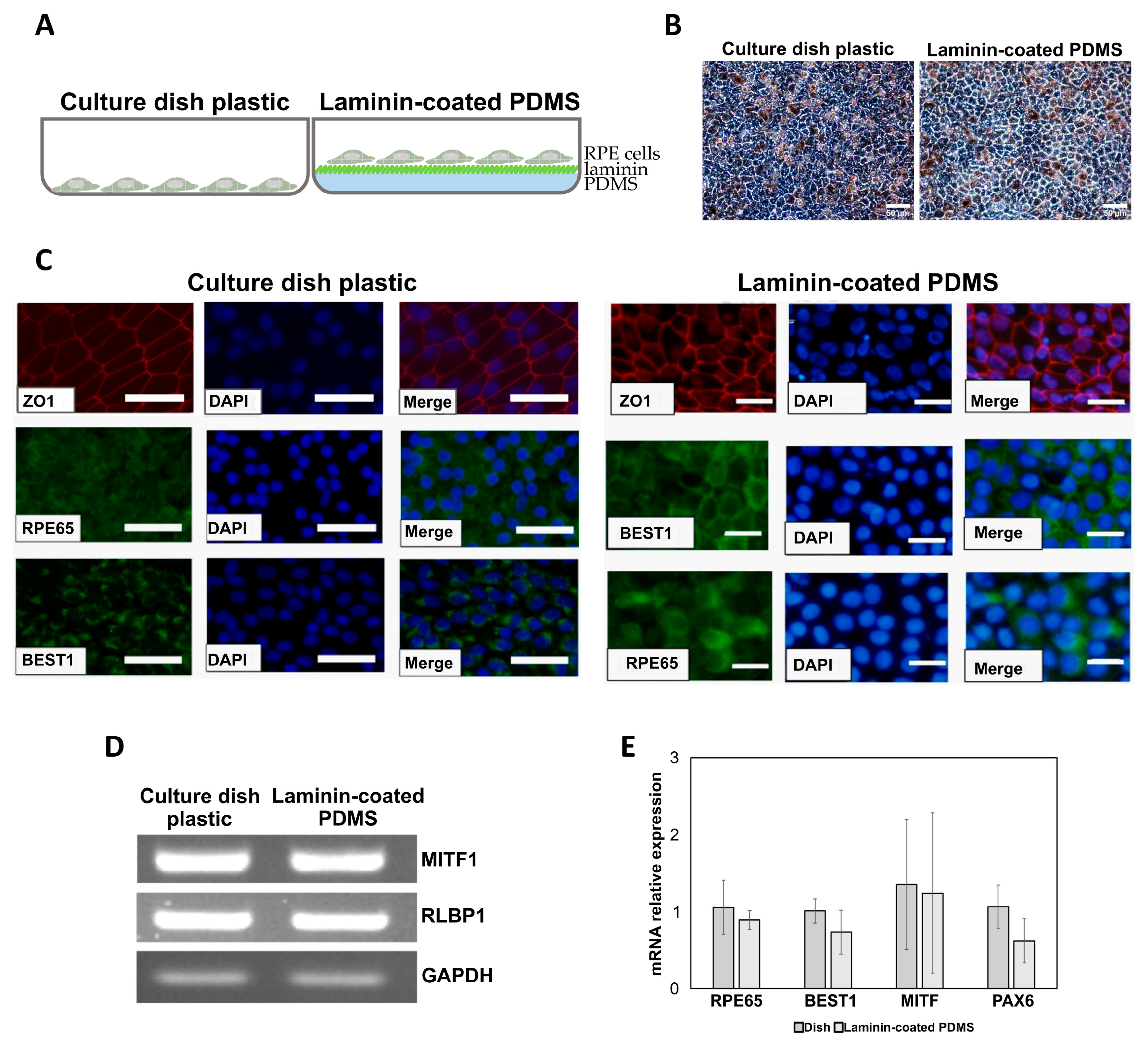
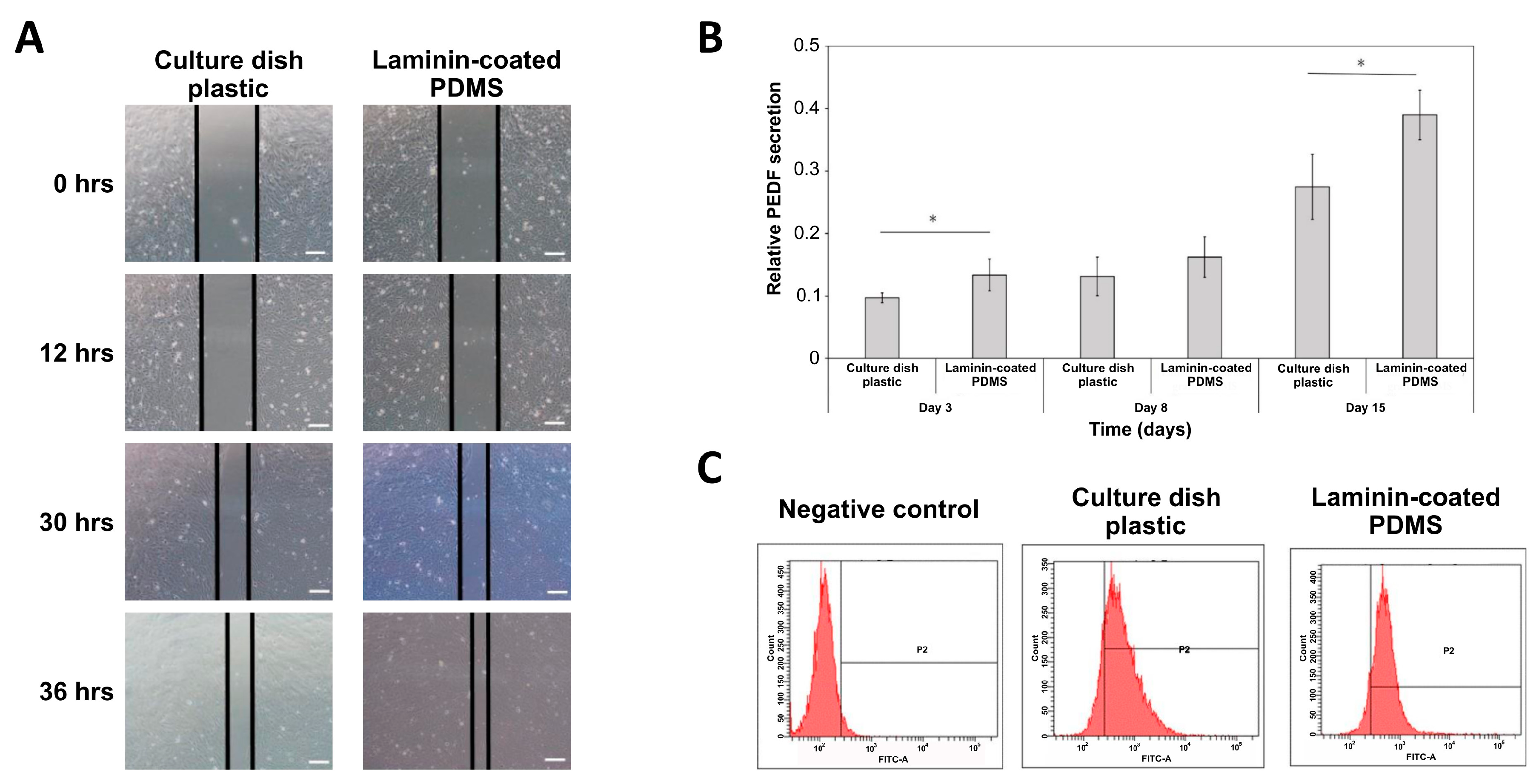
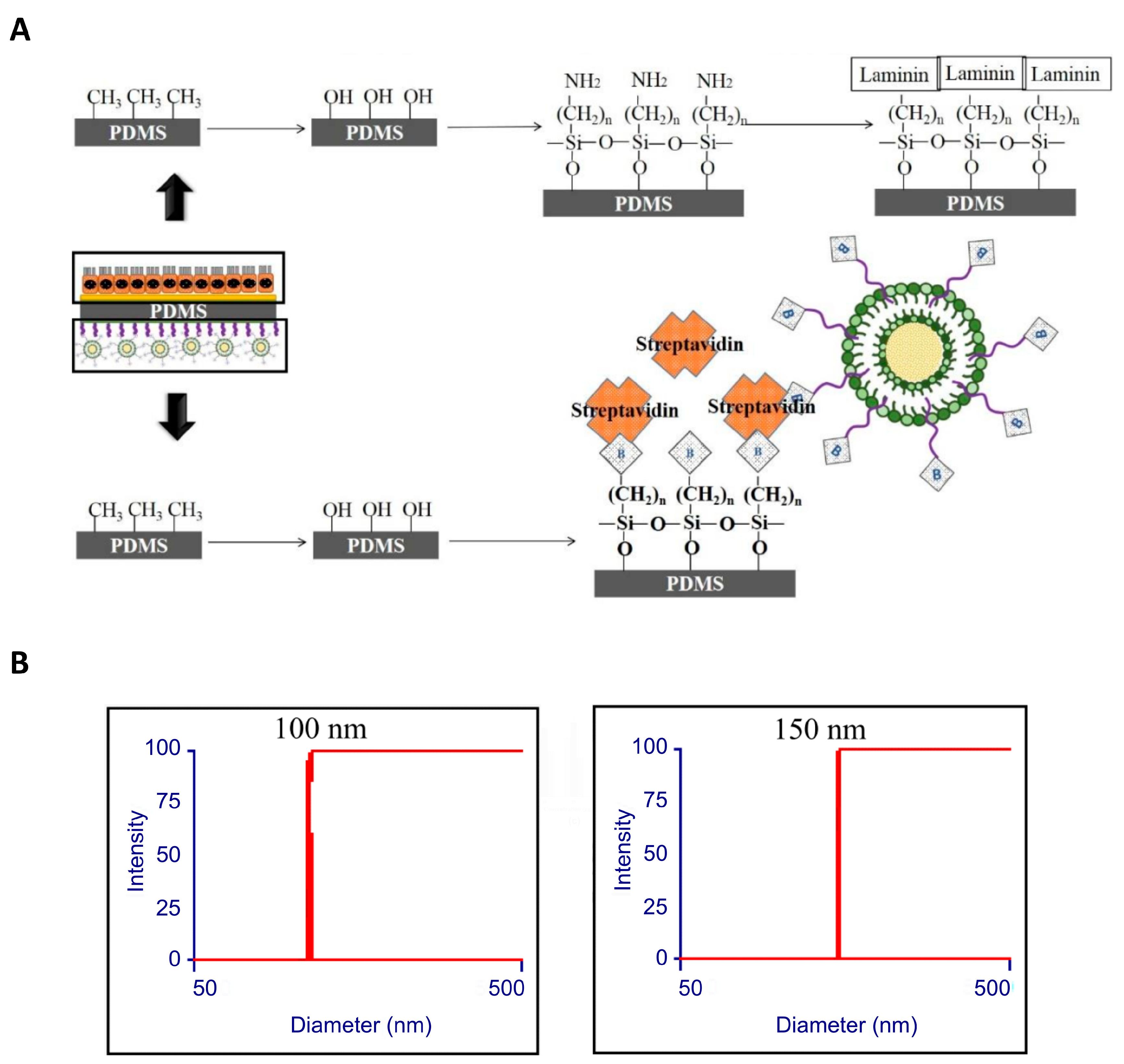
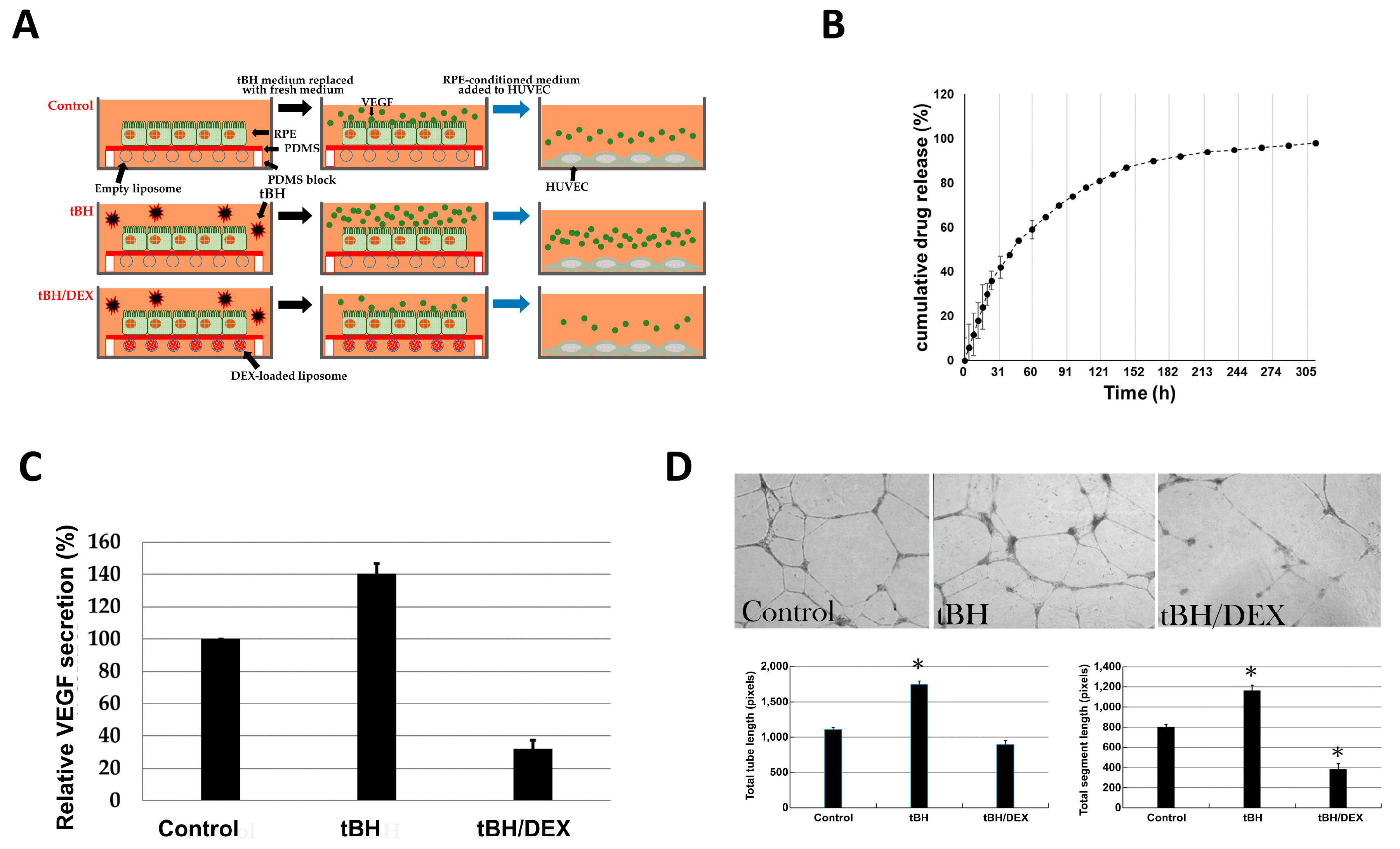
© 2019 by the authors. Licensee MDPI, Basel, Switzerland. This article is an open access article distributed under the terms and conditions of the Creative Commons Attribution (CC BY) license (http://creativecommons.org/licenses/by/4.0/).
Share and Cite
Lin, T.-W.; Chien, Y.; Lin, Y.-Y.; Wang, M.-L.; Yarmishyn, A.A.; Yang, Y.-P.; Hwang, D.-K.; Peng, C.-H.; Hsu, C.-C.; Chen, S.-J.; et al. Establishing Liposome-Immobilized Dexamethasone-Releasing PDMS Membrane for the Cultivation of Retinal Pigment Epithelial Cells and Suppression of Neovascularization. Int. J. Mol. Sci. 2019, 20, 241. https://doi.org/10.3390/ijms20020241
Lin T-W, Chien Y, Lin Y-Y, Wang M-L, Yarmishyn AA, Yang Y-P, Hwang D-K, Peng C-H, Hsu C-C, Chen S-J, et al. Establishing Liposome-Immobilized Dexamethasone-Releasing PDMS Membrane for the Cultivation of Retinal Pigment Epithelial Cells and Suppression of Neovascularization. International Journal of Molecular Sciences. 2019; 20(2):241. https://doi.org/10.3390/ijms20020241
Chicago/Turabian StyleLin, Tzu-Wei, Yueh Chien, Yi-Ying Lin, Mong-Lien Wang, Aliaksandr A. Yarmishyn, Yi-Ping Yang, De-Kuang Hwang, Chi-Hsien Peng, Chih-Chien Hsu, Shih-Jen Chen, and et al. 2019. "Establishing Liposome-Immobilized Dexamethasone-Releasing PDMS Membrane for the Cultivation of Retinal Pigment Epithelial Cells and Suppression of Neovascularization" International Journal of Molecular Sciences 20, no. 2: 241. https://doi.org/10.3390/ijms20020241
APA StyleLin, T.-W., Chien, Y., Lin, Y.-Y., Wang, M.-L., Yarmishyn, A. A., Yang, Y.-P., Hwang, D.-K., Peng, C.-H., Hsu, C.-C., Chen, S.-J., & Chien, K.-H. (2019). Establishing Liposome-Immobilized Dexamethasone-Releasing PDMS Membrane for the Cultivation of Retinal Pigment Epithelial Cells and Suppression of Neovascularization. International Journal of Molecular Sciences, 20(2), 241. https://doi.org/10.3390/ijms20020241





